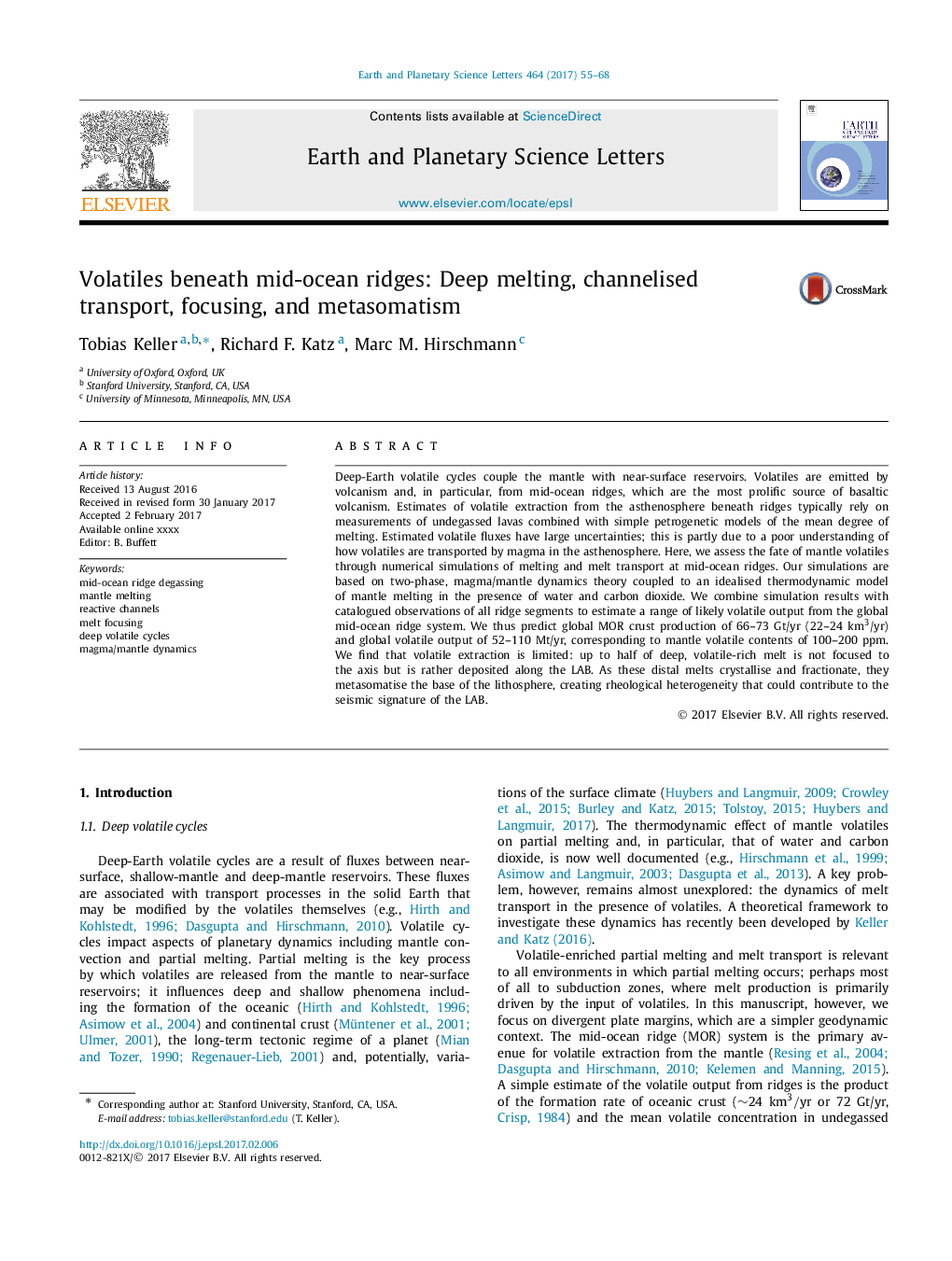| Article ID | Journal | Published Year | Pages | File Type |
|---|---|---|---|---|
| 5779911 | Earth and Planetary Science Letters | 2017 | 14 Pages |
Abstract
Deep-Earth volatile cycles couple the mantle with near-surface reservoirs. Volatiles are emitted by volcanism and, in particular, from mid-ocean ridges, which are the most prolific source of basaltic volcanism. Estimates of volatile extraction from the asthenosphere beneath ridges typically rely on measurements of undegassed lavas combined with simple petrogenetic models of the mean degree of melting. Estimated volatile fluxes have large uncertainties; this is partly due to a poor understanding of how volatiles are transported by magma in the asthenosphere. Here, we assess the fate of mantle volatiles through numerical simulations of melting and melt transport at mid-ocean ridges. Our simulations are based on two-phase, magma/mantle dynamics theory coupled to an idealised thermodynamic model of mantle melting in the presence of water and carbon dioxide. We combine simulation results with catalogued observations of all ridge segments to estimate a range of likely volatile output from the global mid-ocean ridge system. We thus predict global MOR crust production of 66-73 Gt/yr (22-24 km3/yr) and global volatile output of 52-110 Mt/yr, corresponding to mantle volatile contents of 100-200 ppm. We find that volatile extraction is limited: up to half of deep, volatile-rich melt is not focused to the axis but is rather deposited along the LAB. As these distal melts crystallise and fractionate, they metasomatise the base of the lithosphere, creating rheological heterogeneity that could contribute to the seismic signature of the LAB.
Keywords
Related Topics
Physical Sciences and Engineering
Earth and Planetary Sciences
Earth and Planetary Sciences (General)
Authors
Tobias Keller, Richard F. Katz, Marc M. Hirschmann,
